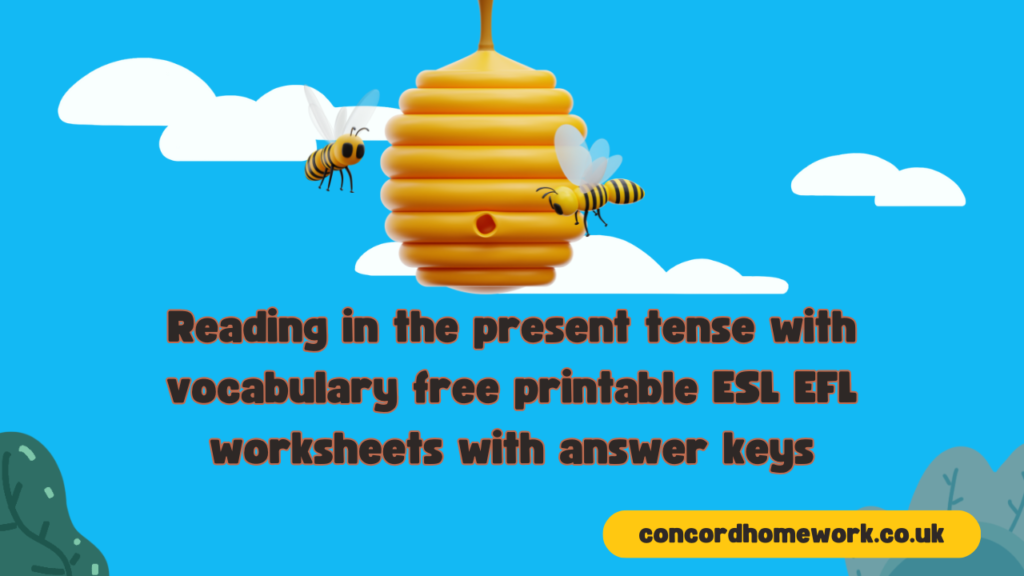Read and listen. Choose the answers.
Write the word from the box that best completes each sentence.
This ESL EFL free worksheet is about the simple present tense. Students read, listen and answer. There is a vocabulary activity. The worksheet has an answer key.
Using the Simple Present Tense: Overview
The simple present tense is one of the fundamental aspects of English grammar, indicating actions that happen regularly, facts, habits, or general truths. Let’s delve into its various aspects:
| Aspect | Example | Explanation |
|---|---|---|
| Affirmative Sentences | I play tennis. | Used to express actions, habits, or routines in the present. The verb remains in its base form (play). |
| Negative Sentences | She does not like coffee. | Formed by adding “do not” (don’t) or “does not” (doesn’t) before the base form of the verb. Indicates actions that do not happen or are not true in the present. |
| Yes/No Questions | Do you speak English? | Begin with auxiliary verb “do” or “does” followed by the subject and the base form of the main verb. Used to inquire about actions or habits in the present. |
| Wh- Questions | Where does he work? | Similar to yes/no questions but start with interrogative words (who, what, where, when, why, how). |
| Short Answers | Yes, I do. / No, he doesn’t. | Responses to yes/no questions, affirming or negating the action or habit indicated in the question. |
| Third-Person Singular | He reads books. | When the subject is third-person singular (he, she, it), “s” or “es” is added to the base form of the verb. |
| Habitual Actions | She exercises every morning. | Used to describe actions or habits that occur regularly, emphasizing their habitual nature. |
| Facts and General Truths | The sun rises in the east. | Expresses facts, truths, or scientific laws. The simple present tense is used to convey timeless information. |
Example Sentences:
- Affirmative: She reads books every day.
- Negative: They don’t like spicy food.
- Yes/No Question: Do you speak French?
- Wh- Question: Where does he live?
- Short Answer: Yes, she does.
- Third-Person Singular: He plays the piano.
- Habitual Action: She walks to work.
- Fact: The Earth revolves around the sun.
When to Use:
- Use the simple present tense for routine actions, general truths, habitual activities, and facts.
- Pay attention to subject-verb agreement, especially with third-person singular subjects.
- Form negative and question sentences using auxiliary verbs “do” and “does”.
What should our team prepare for you?
What topics do you need?
“Thank you for taking the time to explore this topic with us! We hope you found the information helpful and insightful. Have any thoughts, questions, or additional examples to share? We’d love to hear from you in the comments below!
Don’t forget to spread the word by sharing this blog with your friends, family, and colleagues. Together, let’s continue to learn, grow, and connect with the world around us. Happy reading and sharing!”

